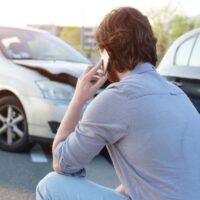Negligence of Multiple Parties: Article 16 in a Personal Injury Case

In the ideal case, personal injury liability is clear: A negligent driver fails to stop at a stop sign and careens into a pedestrian. That driver is liable for the injuries and other damages caused. In practice, however, it’s often less clear-cut. Perhaps the driver was distracted, but when they did try to slam the brakes, their brakes failed. It so happens that their brakes were defectively designed, being prone to failure under certain circumstances. Now, the distracted driver and the auto manufacturer are both partially to blame. Who does the pedestrian sue? Continue reading to learn about multiple-party liability and New York’s Article 16. If you were injured in a car or truck accident in the Hudson Valley, call an experienced Kingston traffic accident lawyer for help.
CPLR Article 16
Historically, when multiple parties (known as “tortfeasors”) were at fault for a plaintiff’s injuries, each and every tortfeasor could be sued for the full amount of the plaintiff’s damages. In the example given above, even if a jury would determine that the driver was 40% at fault for the accident and the manufacturer of the faulty brakes was 60% at fault, the driver could be held liable for the plaintiff’s full damages. In 1966, New York amended the state’s Civil Practice Law & Rules (CPLR) to add Article 16.
Under Article 16, defendants who are less than 50% at fault for a given accident can only be held liable for their percentage of fault. If our negligent driver was 40% at fault and the injured pedestrian’s damages total $100,000, the driver can only be held liable for $40,000. If the pedestrian wants to collect their full $100,000, they’ll need to sue the auto manufacturer as well and split their claims.
Notably, Article 16 applies only to non-economic damages, meaning things like pain and suffering and emotional distress. Medical bills, lost wages, and other economic damages are not limited by Article 16. Additionally, the plaintiff may be able to get around Article 16 with regard to a particular party if they prove that, despite their due diligence, they are unable to sue the other liable party.
How Does Article 16 Affect Your Case?
If you were injured in a car or truck accident in New York, it’s important to know who all may be held liable and to include all potential parties in your action. To maximize your non-economic damages (pain and suffering, etc.), you’ll need to attach all relevant parties to the case. If you only sue one party, and the judge or jury determines that the party is less than 50% responsible for your accident, then you will be limited to their proportion of fault in your non-economic claims.
For your economic claims, however, you can pursue full damages against any liable party. The defendant can then turn around and pursue other liable parties to recover the appropriate portion of the damages they paid. In the example given above, if you sued the driver for 100% of your economic damages (let’s say $30,000), then you can collect $30,000 from the driver. The driver would then need to pursue the auto manufacturer, prove the auto manufacturer was 60% liable, and file a claim to recover $18,000 (or 60% of your claim against the driver).
Trusted Advice and Effective Representation for Your Hudson Valley Car Accident Claim
If you or someone you love has been hurt by a negligent driver in New York, find out if you’re entitled to money damages for your injuries by contacting the passionate and trial-ready Hudson Valley car crash lawyers at Rusk, Wadlin, Heppner & Martuscello, LLP for a free consultation at 845-331-4100 (Kingston) or 845-236-4411 (Marlboro).
